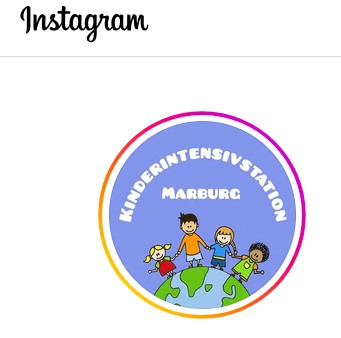Main Content
Pediatric emergency and intensive care medicine
Pediatric emergency department
The emergency outpatient clinic of the Department of Pediatrics and Adolescent Medicine is integrated into the Central Emergency Department at University Hospital Marburg but is equipped with the space and personnel to meet the needs of children and adolescents. In the Pediatric Emergency Department, children and adolescents up to the age of 18 with acute problems and illnesses are cared for around the clock in an age-appropriate manner by physicians and pediatric nurses from the Department of Pediatric and Adolescent Medicine. Patients are treated on an interdisciplinary basis as needed, i.e. together with specialized physicians from other departments at the hospital. Examinations or treatments needed immediately are initiated directly. Inpatient admission is handled as medically required. In other cases depending on the findings, we will recommend parents take their child to a pediatrician or family doctor or to one of our specialized outpatient clinics, or to our day clinic, for further diagnosis and therapy.
Students can learn under supervision to evaluate and provide initial diagnosis and treatment to acutely ill children.
Inhalt ausklappen Inhalt einklappen Contact
Senior doctors: PD Dr. med. Nadine Mand, Dr. med. Rahel Aeschimann-Huhn
Tel: 06421-58-61224
Pediatric intensive care unit
Children and adolescents beyond neonatal age up to 18 years receive treatment at the pediatric intensive care unit from both the Department of Pediatrics and Adolescent Medicine and all surgical clinics at University Hospital Marburg. With interdisciplinary cooperation, patients in this unit have access to the highest level of medical care and a wide range of diagnostic and therapeutic options. The Pediatric Intensive Care Unit has 7 fully equipped treatment stations. Both nursing staff and physicians work in shifts so that patients are competently cared for around the clock.
If you would like to get an insight into everyday life on our ward, you are welcome to follow us on our Instagram channel “Kinderintensivstation_marburg”, click here for our profile

Students have the option of completing part of the pediatric internship trimester at the pediatric intensive care unit.
In addition to caring for our inpatients, we have:
- “Shock room” care of polytrauma patients, interdisciplinary with all specialties, including emergency imaging and emergency interventions
- Pediatric first aid support from ambulances accompanying emergency physicians
- Analgesia for minor procedures in the maxillofacial area, wound care, debridement for scalds and burns
- Sedation for imaging (MRI, CT)
- Postoperative monitoring
- Sedation and intensive monitoring during brachytherapy
- Monitoring during transfusions
- Monitoring in acute suicidal ideation, danger to others and oneself and if necessary restraint, cooperation with Child and Adolescent Psychiatry
- Monitoring in cases of overdose, poisoning, or intoxication, administration of antidotes if needed, cooperation with Post Control Center
The following clinical syndromes, among others, can be treated at our pediatric intensive care unit:
- Cardiac arrhythmias
- Traumatic brain injury, increased intracranial pressure
- Meningitis, encephalitis
- Sepsis
- Respiratory insufficiency
- Status asthmaticus
- Acute respiratory distress syndrome (ARDS)
- Acute and chronic renal failure (e.g. hemolytic uremic syndrome)
- Care after kidney transplant
- Acute abdomen
- Polytrauma
- Care of oncological patients in collaboration with Professor Körholz, Giessen University Hospital
- Postoperative care after complex procedures in collaboration with Professor Seitz, Pediatric Surgery Marburg
- Overdose, poisoning, intoxication (alcohol, controlled substances, medications, carbon monoxide)
- Initial manifestation of type 1 diabetes with ketoacidosis
For this purpose, we have various intensive medical measures at our disposal:
- Noninvasive and invasive ventilation
- iNO
- HFNC
- Catecholamine therapy
- Acute dialysis (CVVHF, CVVHDF)
- Plasmapheresis
- Defibrillation and cardioversion
- Continuous intracranial pressure monitoring via EVD
- Continuous EEG monitoring (GE equipment)
- aEEG for newborns
- Bladder pressure measurement
- Bedside ultrasound 24 hours a day
- GlideScope and video laryngoscope
- Central venous and arterial access devices
- Invasive measures such as lumbar puncture, bladder puncture, pleural puncture
Inhalt ausklappen Inhalt einklappen Contact
Senior doctors: PD Dr. med. Nadine Mand, Dr. med. Rahel Aeschimann-Huhn
Tel: 06421-58-62667